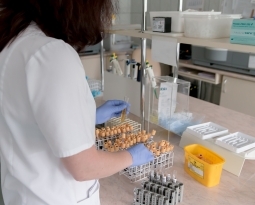Coco – The Pixar movie that blends art and technical advancement
From Toy Story to Inside Out, Pixar Studios has become a universally acclaimed, visually-stunning storyteller of animation. But less known is the sheer amount of innovation, problem-solving, and laborious commitment needed to achieve Pixar’s ground-breaking heights. The company’s upcoming film Coco was a testament to this, where Pixar encountered quite a few new technical challenges that had to be overcome with new solutions.
Coco follows the story of Miguel, a young Mexican boy with aspirations to become a musician. However, after his great-great-grandfather left the family to pursue a career as a musician, the family forbade music and discouraged Miguel’s dreams. All this changes when Miguel is thrust into the Land of the Dead on Dia de los Muertos (the Mexican holiday known as Day of the Dead). He embarks on a journey back to the land of the living, searching for his great-great-grandfather in the process.
Because the story takes place in the Land of the Dead, animators faced a number of setbacks. For one, skeletons comprised a major component of the story and Pixar had to come up with a way for the skeletons to move in a convincing yet distinct manner from humans made up of muscles and flesh. Gini Santos, one of the supervising animators on Coco, said, “Over the years we’ve spent so much time and research figuring out our human characters and how their skin squashes and stretches, so this totally broke the rules for us. We knew with skeletons that all of a sudden, those boundaries of something organic are gone — the skin, the muscles, the tendons. And if there’s nothing holding it together, what can you do with bones?” To render each skeleton unique, the animators had to design distinctive movements for each skeleton to reflect their individual personalities. Animators, moreover, diverged from conventional skeleton designs by giving each a set of eyes and clothing.
According to International Business Times, each skeleton was composed of about 127 bones, 80 of which were visible while the remaining bones were covered by clothing. Manual painting of the bones was out of the question due to the large number of bones involved and consequently, a special software was needed. Initially, the company tested using Presto, the same software used for its film Brave (2012), but this couldn’t handle the requirements of Coco. Clothes would get tangled in-between bones and did not achieve the animators’ desired look. Instead, the developers tested a new program where negative spaces could be filled in more efficiently and the bones on the characters’ arms and legs were better infused. This helped orient the clothes on the bones in a more natural way.
Pixar also had to tackle lighting challenges. The Land of the Dead was elaborately designed with a multitude of nooks, crevices, and cracks that needed to be filled with lights of varying gradients. At least seven million individual lights had to be incorporated on the film, ranging from pin lights, plaza lights, street lights, and so forth. A computer could not process all these individual lights without a boost from special coding. Pixar programmers, adopting a practice from The Good Dinosaur (2015), developed a code whereby the different lights could be grouped into fifteen types, making it more manageable for the computer to process than seven million individual lights.
Are you a software company experimenting with different codes to improve animation like Pixar’s efforts? Did you know your trials could be eligible for the R&D Tax Credit and you can receive up to 14% back on your research expenses? To find out more, please contact a Swanson Reed R&D Specialist today or check out our free online eligibility test.
Swanson Reed regularly hosts free webinars and provides free IRS CE credits as well as CPE credits for CPA’s. For more information please visit us at www.swansonreed.com/webinars or contact your usual Swanson Reed representative.

















